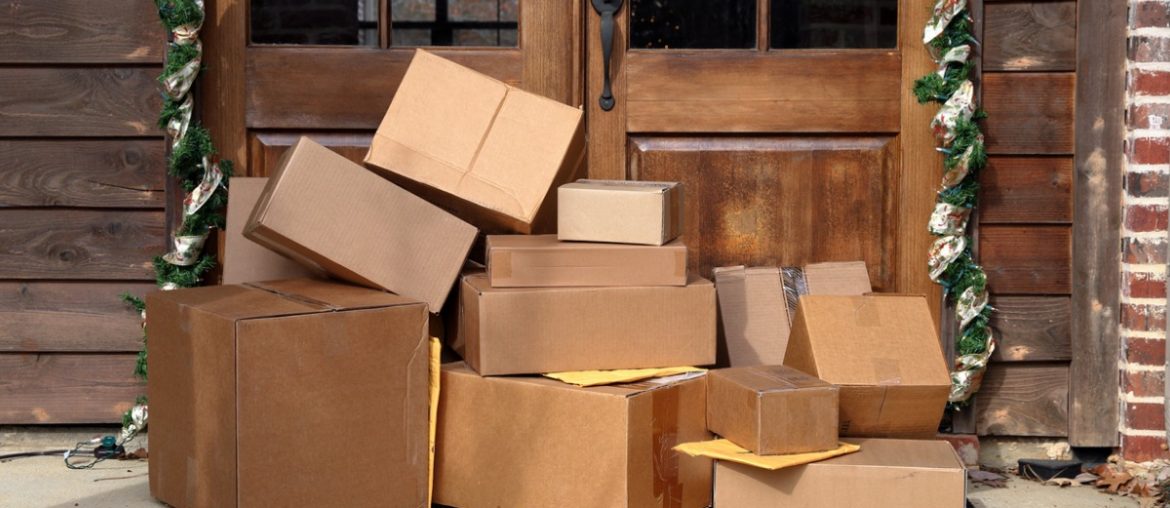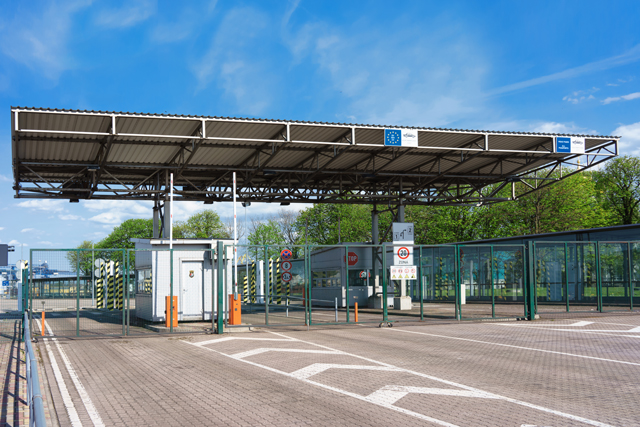With all of the changes brought on by COVID-19, we’ve heard the word “unprecedented” being used more than ever this year. While the word might seem a bit overused at this point, it’s just the right term to describe the reality of the situation for this holiday season. COVID-19 has led to significant changes in just about every facet of everyday life, and last mile delivery and logistics are certainly not immune to feeling those shifts.
Throughout 2020, we’ve already seen major changes in people’s ordering habits, from household goods to grocery and takeout delivery. As we enter the thick of the holiday shopping season, you might be unsure of exactly what to expect or how to deal with surges in holiday delivery volume. Understanding how much consumers are spending and where they’re spending it, though, can help you to navigate the holiday season as smoothly as you navigate your local streets and highways.
A Shift in Spending Habits
The pandemic has impacted different individuals, families, and industries in very different ways, but no matter how you slice it many consumers are feeling less secure and more uncertain about their financial futures this year. According to a study from Deloitte, around 38% of shoppers are planning to spend less during the holidays this year than they did in 2019. The result is expected to be a decrease in holiday spending of around 7% per household compared to last year.¹
That decrease in overall spending doesn’t mean that you should expect to be delivering fewer parcels to holiday shoppers this year. While shoppers may plan to spend less overall, many shoppers are planning to do the bulk of their holiday shopping online this year. Online purchases are expected to account for more than twice as much as in-store purchases during this year’s holiday shopping season.¹
This is in line with trends that predate COVID-19, as spending online has been on the rise in recent years. E-commerce has seen a steady increase in holiday spending year over year, with especially impressive figures around Black Friday, the traditional start of the holiday shopping season. Take a look at how e-commerce spending has jumped up in the United States even in just the past few years:²
- Thanksgiving Eve: $1.82B spent in 2017, $2.9B spent in 2019
- Thanksgiving: $2.8B spent in 2017, $4.2B spent in 2019
- Black Friday: $5B spent in 2017, $7.4B spent in 2019
- Small Business Saturday: $2.5B spent in 2017, $3B in 2019
- Cyber Monday: $6.6B spent in 2017, $9.4B spent in 2019
Steering Clear of Stores
Seeing consumers shift toward e-commerce for their holiday shopping isn’t surprising given the trends we’ve seen throughout COVID-19. With many shoppers opting to avoid grocery stores in favor of grocery delivery, it’s understandable that many consumers would rather shop online than make their way to traditionally crowded retail stores as the holidays draw closer.
According to one study, shoppers seem decidedly more interested in completing their holiday shopping online when possible compared to last year. Forty-nine percent of respondents reported being more interested in holiday shopping online, while just 10% were less interested. The numbers for those interested in buying online and picking up in-store were just slightly less overwhelming, with 33% reporting an increase in interest and just 16% reporting that they were less interested.³
Deloitte’s study found that 51% of shoppers had some degree of anxiety when it came to shopping in-store and showed that 73% of shoppers were planning to have items delivered during the holidays in 2020, up 11% from 2019.1 With e-commerce stealing the spotlight for the 2020 holiday shopping season, last mile delivery companies can expect a significant surge in business this year—even by holiday standards.
Impressing Your Customers This Holiday Season
Consumers are counting on home delivery for the bulk of their shopping this year, and that means you have the potential to make or break a central part of the holiday season for your customers. Retailers and carriers alike are anticipating spikes in online orders, with big names like UPS, FedEx, and Amazon covering gaps in their fleets and warehouses with seasonal hires. While many major retailers are closed on Thanksgiving day this year—including Walmart, Target, and Best Buy to name a few—many of these same stores are converting portions of their existing stores or warehouses to act as fulfillment centers for e-commerce orders.
Whether you look at major names like Walmart, mom-and-pop shops branching into delivery to survive the COVID-19 climate, or individual craftspeople selling through Etsy and other e-commerce platforms, everyone is expecting to ship plenty of parcels this holiday season; some are even warning customers of the need for added lead time and the risk of potential delays in delivery. This surge of holiday purchases has the potential to overflow the already saturated delivery market, but finding ways to stay on top of things this season can help you to make a major impact on your customers’ season.
Expanding your fleet with seasonal hires is a fairly obvious way to handle more deliveries this season, but it certainly isn’t a realistic option for every last mile delivery service. In many cases, the crucial component of thriving this holiday season is to find ways to accomplish more with the same fleet and staff by ensuring your operations are running efficiently as possible. Route optimization software provides many features that enable last mile delivery companies to keep up with demand during COVID-19, and it can help you stay on top of holiday demand in many of the same ways.
If you’re not already taking advantage of route optimization software to find the most efficient routes for your drivers, chances are that you’re not achieving as much as you could be. Onboarding route optimization software in time for the holidays can give you the edge you need to make more deliveries with the same staff, and to make them on schedule. Last mile delivery companies using WorkWave Route Manager see an average boost of 20% to their delivery efficiency thanks to route automation, ensuring that every driver is completing as many deliveries as possible during their workday. You can also expect to save on fuel with more efficient routing, helping you to reduce your expenses and protect your bottom line during the busy season.
If expanding your fleet is part of your plan for the holidays, routing software can help you to reduce the time it takes to train new drivers. Getting new drivers up to speed quickly helps you to ensure that they’re out on the road sooner so that your labor costs translate directly to more completed deliveries and more money coming in.
Route Manager also gives you the tools you need to communicate with your customers. Available functionality allows you to get real-time driver ETAs and automate email or SMS text updates to recipients, streamlining the delivery process and ensuring that your customers have realistic expectations regarding the arrival of their packages. Through the Route Manager Driver Mobile App, drivers can capture proof of delivery to assure customers that their order has been dropped off. The mobile app also allows drivers to perform barcode scanning to verify that packages are going to the correct delivery address and customer.
While the holiday season is sure to be more hectic than ever for last mile delivery companies this year, knowing what to expect as the season progresses and taking steps to be ready for an influx of orders can help you navigate the season as smoothly as a certain someone’s sleigh cuts across the night sky. To learn more about how your fleet can run more efficiently and make a great impression on your customers this holiday season, be sure to explore Route Manager and schedule a free consultation to see our software in action today.
1 Deloitte. “Expected Share of Holiday Budget Spent Online and In-store in The United States in 2020.” Statista, Statista Inc., 1 Oct 2020, https://www.statista.com/statistics/473533/proportion-of-online-holiday-spending-in-the-united-states/
2 Adobe. “Holiday Season Retail E-commerce Sales in The United States from 2017 to 2019, by Online Shopping Day (in Billion U.S. Dollars).” Statista, Statista Inc., 11 Jan 2020, https://www.statista.com/statistics/861193/us-holiday-season-retail-e-commerce-spending-by-online-shopping-day/
3 Tableau Software. “Compared to Last Year, How Interested Are You in Shopping for The Holidays in The following Ways?.” Statista, Statista Inc., 22 Jun 2020, https://www.statista.com/statistics/1127275/shopping-method-change-holiday-season-covid-19-usa/




